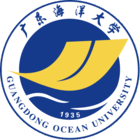详细信息
流沙湾海草床海域浮游动物的群落结构和季节变化 被引量:10
COMMUNITY COMPOSITION AND SEASONAL CHANGES OF THE ZOOPLANKTON IN THE SEAWEED-FIELD AREA OF THE LIUSHA BAY
文献类型:期刊文献
中文题名:流沙湾海草床海域浮游动物的群落结构和季节变化
英文题名:COMMUNITY COMPOSITION AND SEASONAL CHANGES OF THE ZOOPLANKTON IN THE SEAWEED-FIELD AREA OF THE LIUSHA BAY
作者:张才学[1];孙省利[1];陈春亮[1];张瑜斌[1];张际标[1]
机构:[1]广东海洋大学海洋资源与环境监测中心,湛江524088
年份:2013
卷号:44
期号:5
起止页码:1386
中文期刊名:海洋与湖沼
外文期刊名:Oceanologia Et Limnologia Sinica
收录:CSTPCD、、北大核心2011、Scopus、北大核心、CSCD、CSCD2013_2014
基金:广东省自主创新重大科技专项;2007A032600004号;国家海洋公益性行业科研专项;200905005-05号;201105008-5号
语种:中文
中文关键词:浮游动物;群落结构;多样性指数;季节变化;海草床;流沙湾
外文关键词:zooplankton community composition Shannon-Weaver index seasonal change seaweed-field Liusha Bay
中文摘要:2008年2—11月采用浅水Ⅰ型浮游生物网对广东省流沙湾海草床海域的浮游动物进行了周年的季节调查,研究了其群落结构、季节变化及影响因素。结果表明,流沙湾海草床海域浮游动物共有49种和13类浮游幼虫,群落结构主要由桡足类和浮游幼虫所组成。优势种共有20种(类),4季均为优势种的种类有2种:针刺拟哲水蚤、小拟哲水蚤。年均丰度和生物量分别为84.8ind/m3和132.2mg/m3,高峰期位于夏季,低谷位于冬季,周年变化基本上为单峰型。浮游动物生物量与丰度、pH值呈显著的正相关,与叶绿素a和水温呈较明显的相关性,而生物量和丰度与盐度和PO43呈负相关,与其它环境因子相关性不明显。
外文摘要:Seasonal investigation on zooplankton community was carried out in the seaweed-field area of the Liusha Bay of Guangdong, China, from February to November of 2008. A total of 49 species and 13 groups of Pelagic larvae were found in that sea area. In which the copepoda had 35 species taxonomically, with decapoda (2 species), amphipoda (2 species), ostracoda (1 species), hydromedusae (3 species), ctenophora (1 species), chaetognatha (1 species), tunicate (1 species), polychaeta (2 species), water insects (1 species) and pelagic larvae (13 groups including fish larva) presenting simultaneously. The community was mainly composed of copepod and pelagic larvae. The annual average density and biomass were 84.8ind/m3 and 132.2mg/m3, respectively, with the maximum number of organisms found in summer and the minimum found in winter, so there was a mono-peak in annual changes of number of organisms. The area were found to have the most abundant of organisms (48 species including pelagic larvae) during autumn, followed by that in summer (37 species) while the least were in winter (merely 26 species). There were 16 to 30 common species in two seasons. The Jaccard similarity index (including pelagic larvae) ranged from 0.372 to 0.545, with the maximum in spring and summer, and the minimum in autumn and winter. 15 species emerged out of each season, in which 5 groups were pelagic larvae implying subtropical eco-attribution. There were two dominant species spread widely in all seasons and they were Paracalanus aculeatus and P. parvus. The regression analysis found that the abundance was very positively correlated to the biomass and pH, there was positively correlated to the chlorophyll-a and WT as well. The biomass and abundance were negative correlated to the Salinity and PO43- and that were no significant correlated to main environmental factors.
参考文献:
![]() 正在载入数据...
正在载入数据...


